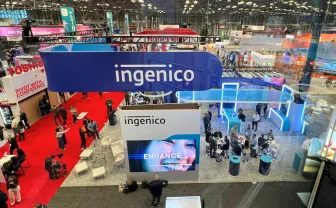Mobile wallets may be great for consumers, but for U.S. retailers, trying to decide if and when they’d like to accept different wallets can drive them crazy. There are simply way too many options and with the growing number of mobile wallet apps in the market, it’s becoming more complicated for retailers to support them all.
A year ago, we had Apple Pay, Android Pay and Samsung Pay. That was manageable. They were based on existing technology standards, which made them relatively easy to test and support. With more than 10 options available in the market – and new ones appearing every week – it’s no longer practical for many merchants to accept them all. Even Consumers are left with the inconvenience of having a number of different mobile wallet options to sort through and they are tasked with trying to remember which retailer accepts which payment option.
While the ecosystem is complex, there is no doubt that mobile wallets are top of mind for consumers. A recent Gallup survey found that most American adults believe that the U.S. will become a cashless society in their lifetime. 62% of respondents added that all purchases will be made with credit cards, debit cards and other forms of electronic payments in their lifetime.
The question is: who will have the largest say in which mobile payment options are adopted – consumers or merchants?
How Will Consumers Choose Mobile Wallets?
Each customer will have different preferences, which opens the market up to a wide variety of mobile payment apps to suit their individual needs. Ultimately, consumers are more likely to adopt a mobile wallet if it has been developed or branded by a company that they already trust. This is one of the reasons why we have seen Apple Pay and Android Pay became the de-facto choice for most customers.
An additional interesting development we’re seeing is new mobile wallet options from card-issuing banks, such as Chase Pay. Banks are launching wallets to make sure their card brands are a consumer’s top choice in a competitive mobile wallet world that is still awaiting a clear winner. Bank-backed apps have the potential to do well with consumers since they’re already a trusted brand and more often than not, consumers already have the bank’s mobile app on their phone.
In addition, a mobile wallet that provides clear value over a physical card will also become important over the next year. Tired of carrying a stack of loyalty cards or coupons? Throughout next year, consumers will experience mobile wallet payment experiences that combine payments with loyalty and couponing into a single payment experience. Mobile wallets that make this experience easy to use and reliable will stand the best chance of gaining broad adoption amongst consumers.
How Will Merchants Choose Mobile Wallets?
Retailers will rely heavily on customer data to determine the best platforms to support. It’s a relatively straightforward exercise to determine which mobile operating systems customers are currently using.
If most customers are on iOS, then a retailer will opt to support Apple Pay to continue offering their customers a seamless and hassle-free shopping experience. Similarly, merchants may also turn to a customer survey to determine which mobile payment solutions they should offer.
Another factor to consider is the technology driving each payment option. There are a number of different apps on the market using a variety of technology to complete transactions. Apps like Walmart Pay and the Starbucks app make use of QR codes and 2D barcodes, while others rely on NFC or online payments. Consumers expect consistency and merchants will be more likely to support the type of mobile payment to ensure that they are delivering a seamless experience to their customers while still offering a variety of options.
With the predicted entry of contactless EMV cards entering the U.S. market, mobile wallets that take advantage of the NFC infrastructure are based on the same technology as these cards and therefore have the potential for broader acceptance which is key to building habit across many merchants.
The bottom line
Without an agreed upon standard, merchants and consumers can expect continued innovation and the introduction of additional new mobile wallets. Eventually, the overall landscape should shift towards more consolidation and standardization of the technology used to accept mobile payments in order to drive a more secure and consistent experience for both retailers and consumers. The choices merchants make will be the deciding factor in which mobile wallet succeeds, but they need to be informed by what consumers want. Ultimately, the mobile wallets that come out on top must be accepted across a majority retailers while offering consumers a secure, seamless and consistent shopping experience.
Greg Burch is VP of Strategic Initiatives, U.S. at Ingenico Group










